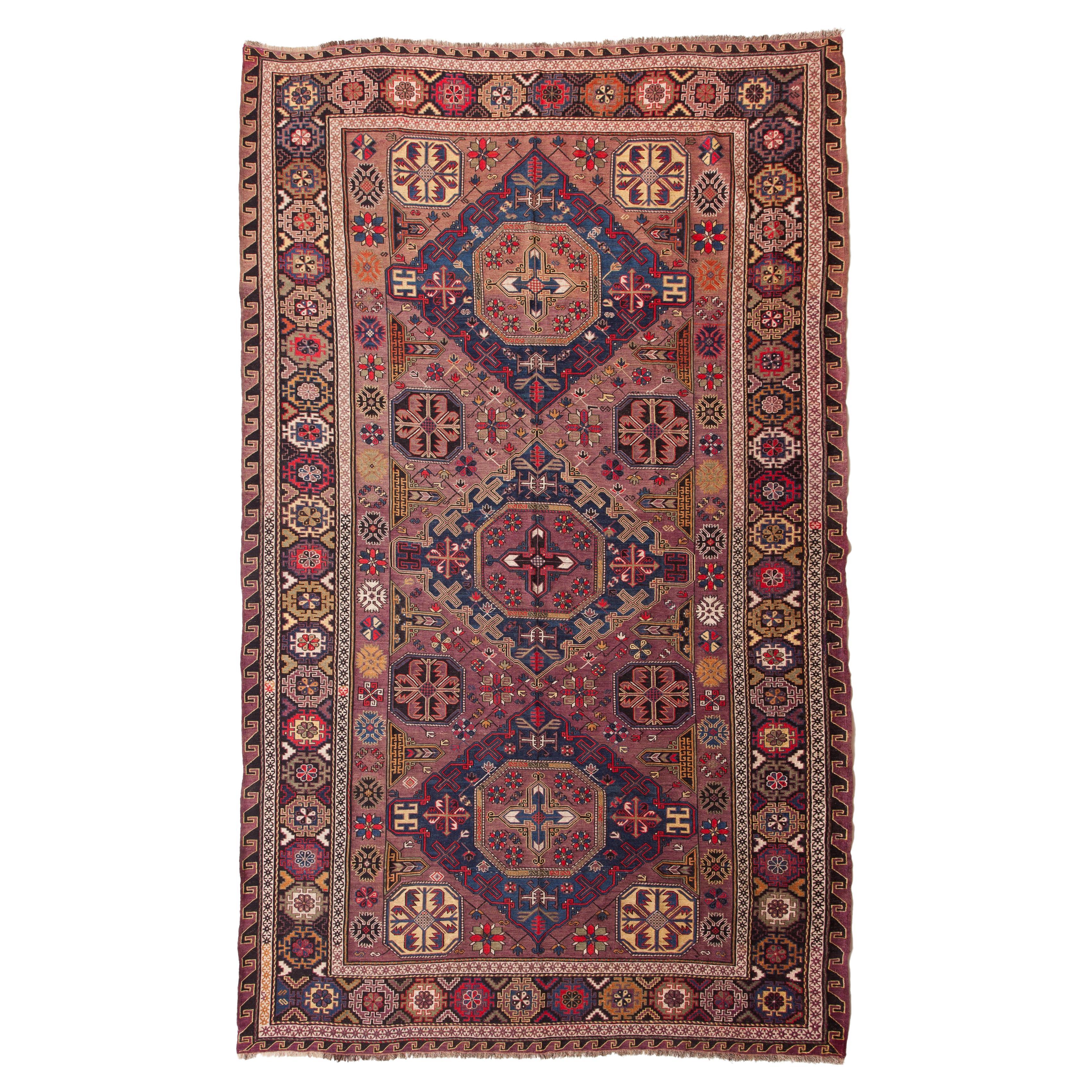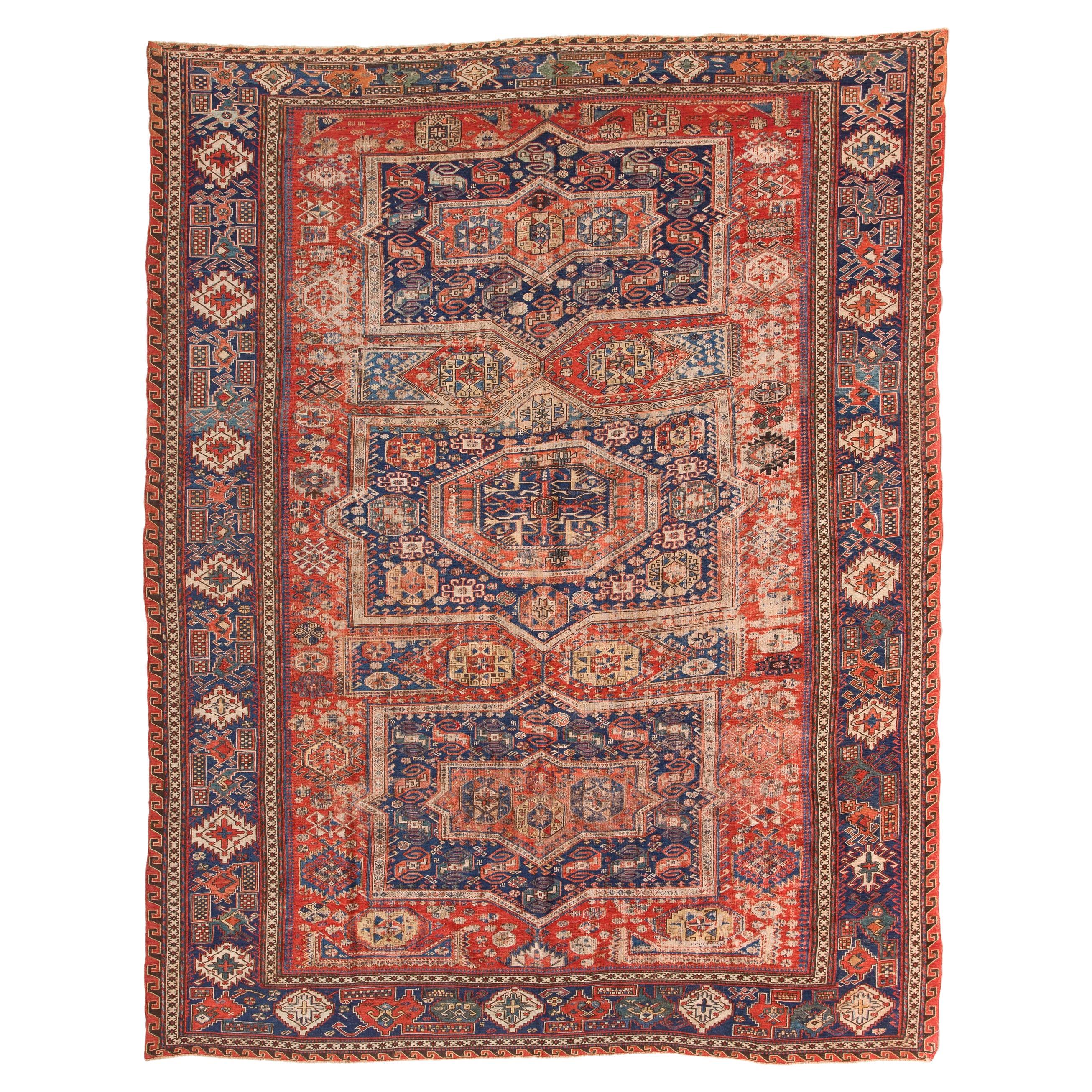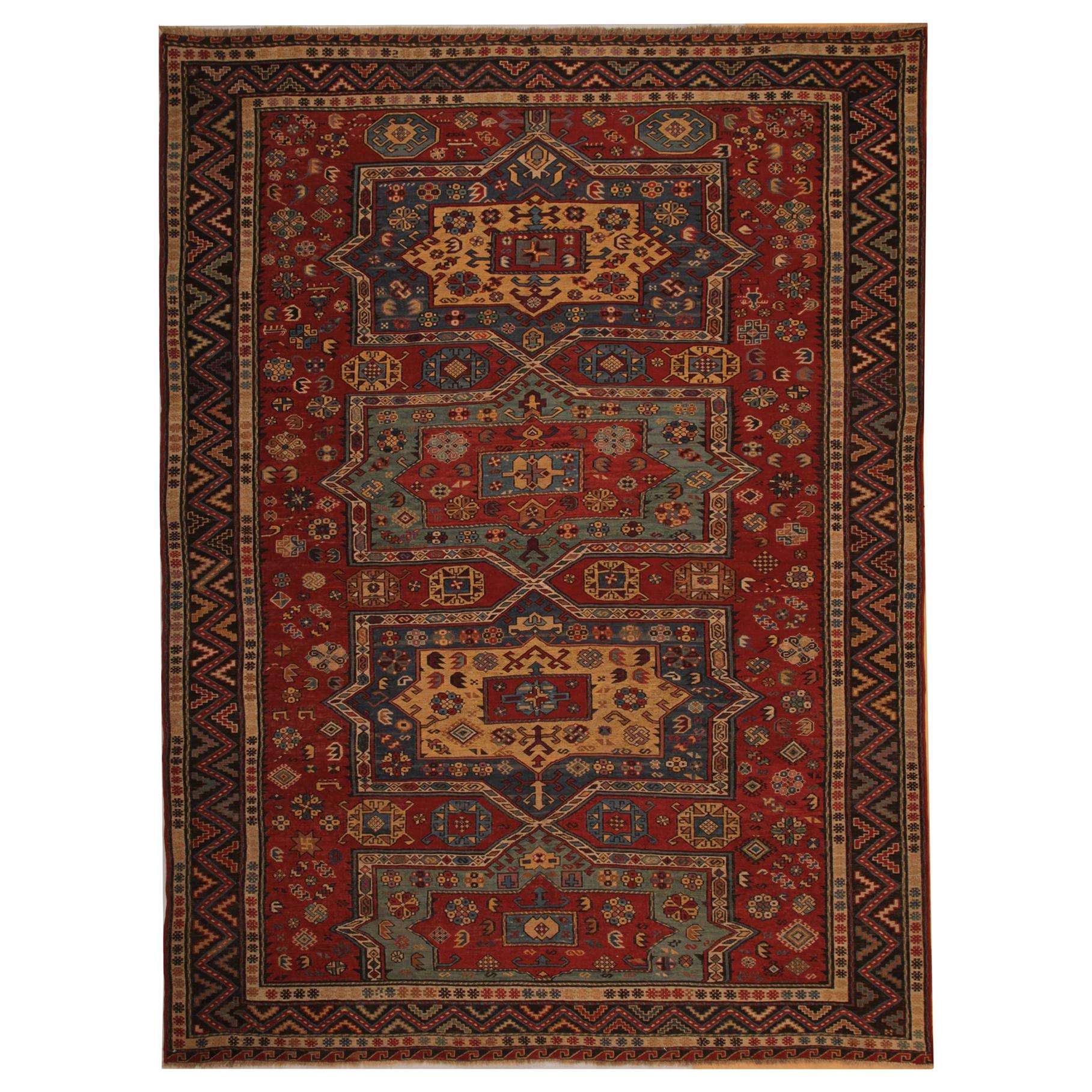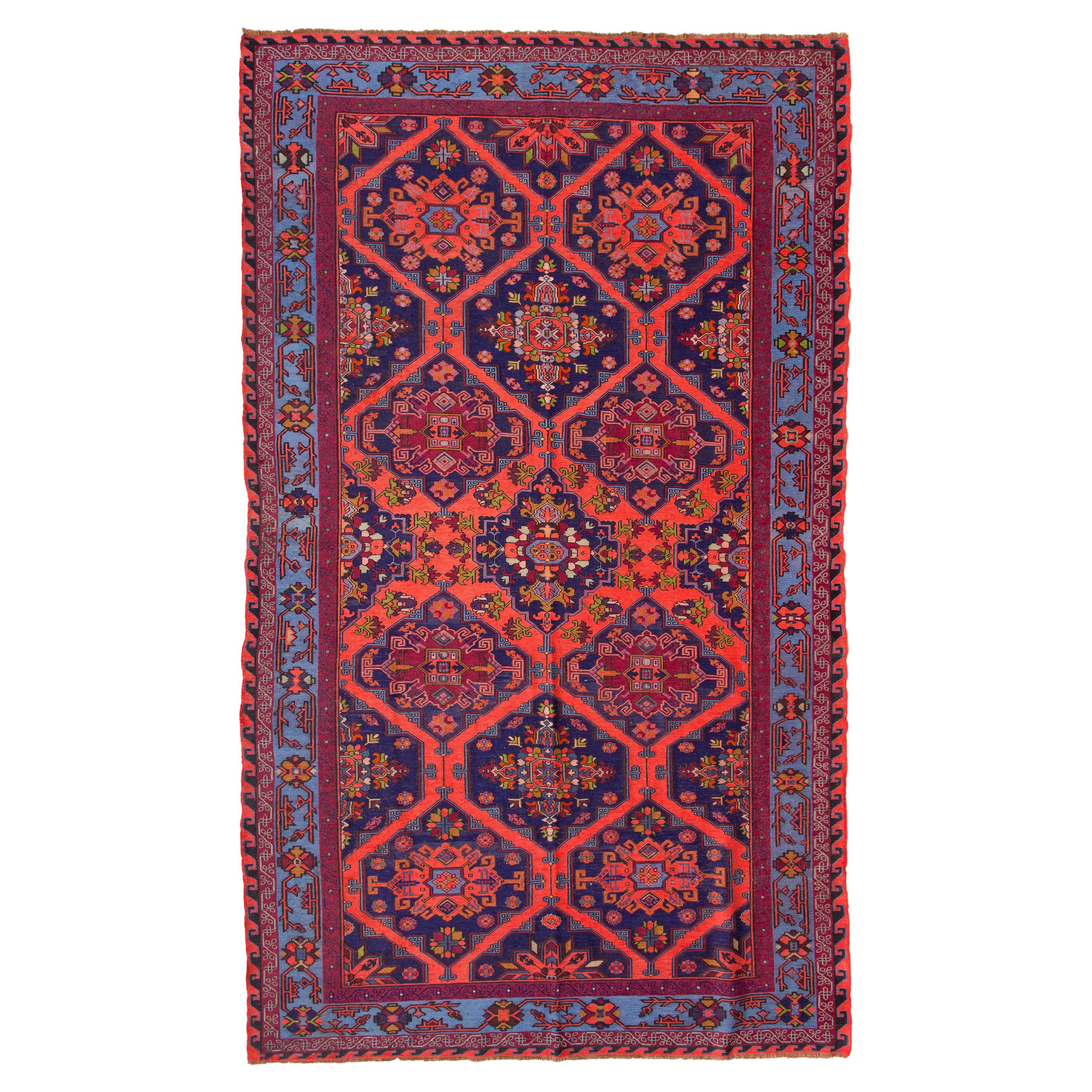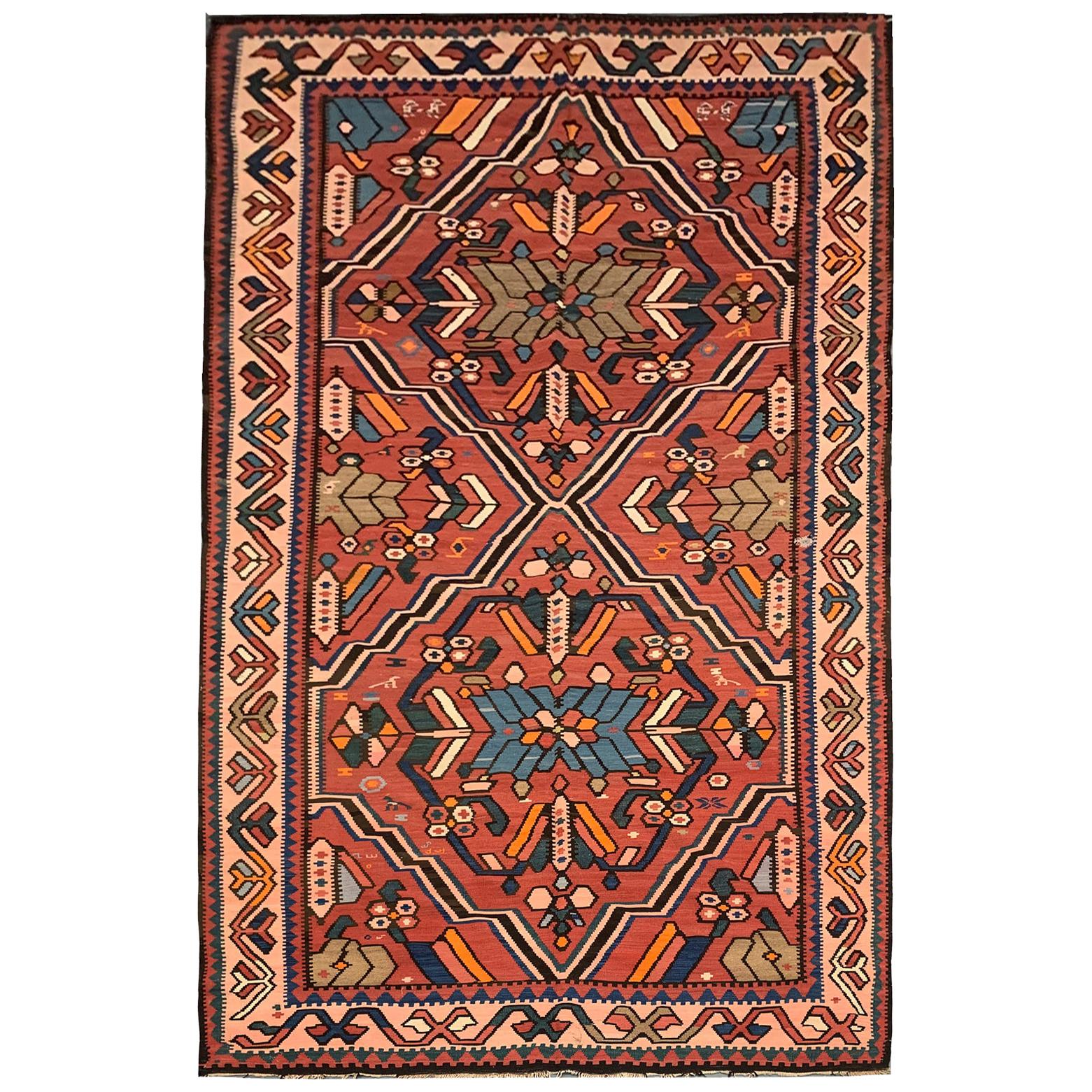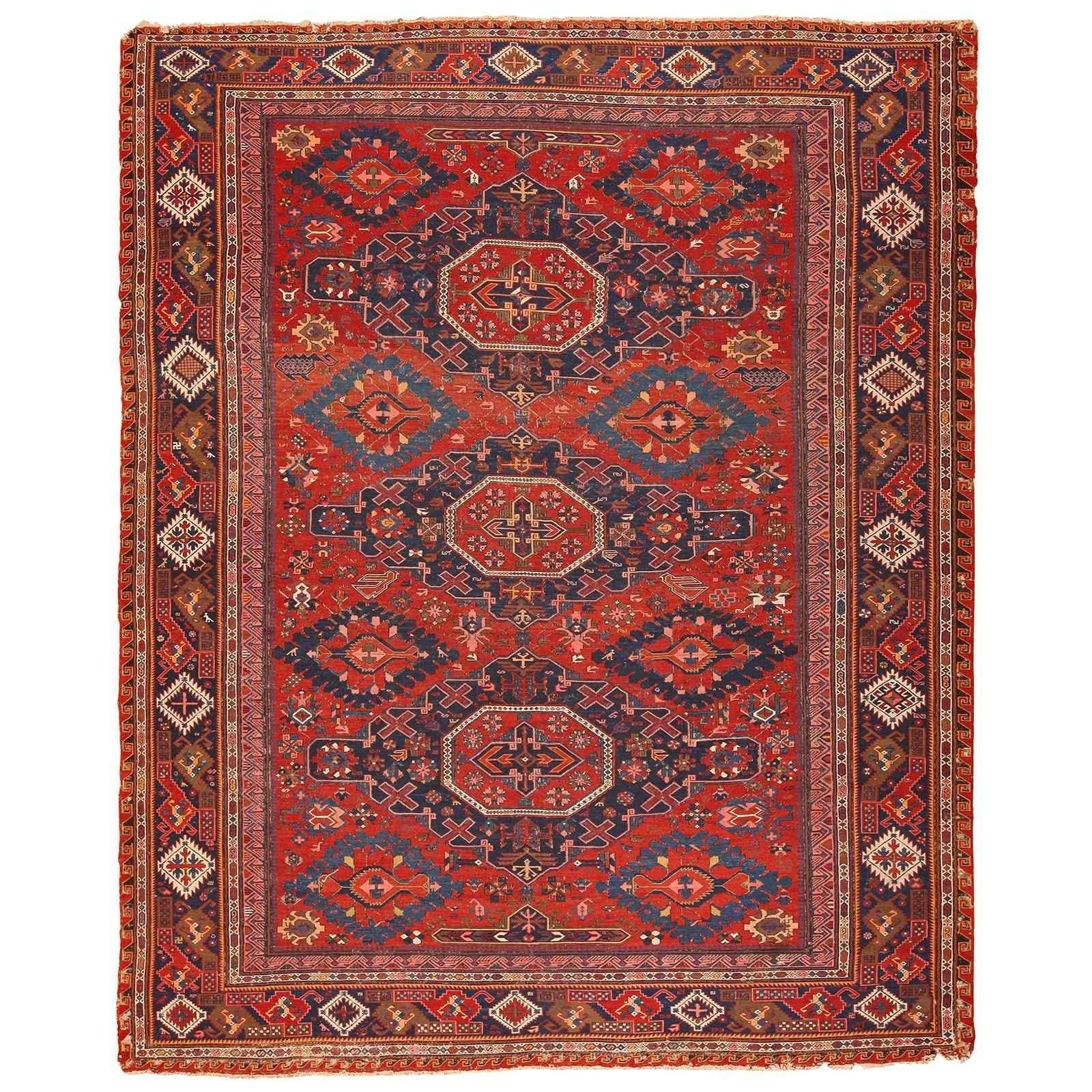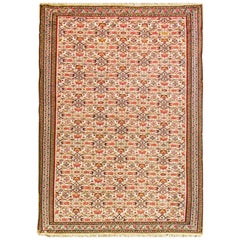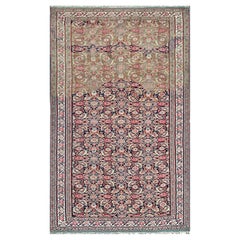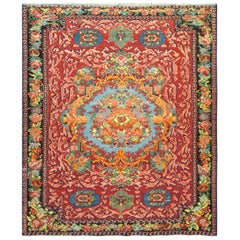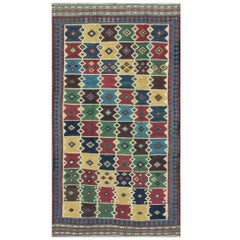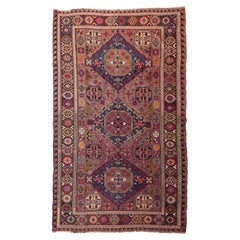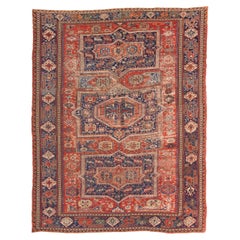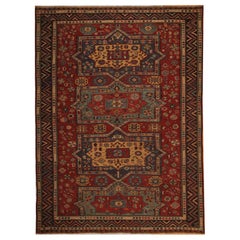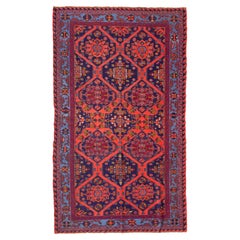Items Similar to Antique Soumak Kilim Caucasian Rug
Want more images or videos?
Request additional images or videos from the seller
1 of 8
Antique Soumak Kilim Caucasian Rug
$4,350
£3,288.06
€3,778.57
CA$6,057.35
A$6,738.55
CHF 3,532.43
MX$82,343.46
NOK 44,981.13
SEK 42,343.51
DKK 28,205.57
Shipping
Retrieving quote...The 1stDibs Promise:
Authenticity Guarantee,
Money-Back Guarantee,
24-Hour Cancellation
About the Item
Soumak rugs or Sumak, construction technique is flat-weave. They are strong and exceptionally durable. Unlike kilims, Soumak rugs are not reversible because non-clipped yarns are left on the back. The wefts are used to produce decorative patterns. Are generally very finely woven and feature richly detailed motifs. Traditionally, these spectacular flat-weave rugs are decorated with ancient symbols, tiny birds and geometric animals. Many of these geometric patterns and tribal symbols are associated with the Shahsavan tribe.
About the Seller
4.8
Vetted Professional Seller
Every seller passes strict standards for authenticity and reliability
Established in 1978
1stDibs seller since 2014
265 sales on 1stDibs
Typical response time: 4 hours
- ShippingRetrieving quote...Shipping from: Evanston, IL
- Return Policy
Authenticity Guarantee
In the unlikely event there’s an issue with an item’s authenticity, contact us within 1 year for a full refund. DetailsMoney-Back Guarantee
If your item is not as described, is damaged in transit, or does not arrive, contact us within 7 days for a full refund. Details24-Hour Cancellation
You have a 24-hour grace period in which to reconsider your purchase, with no questions asked.Vetted Professional Sellers
Our world-class sellers must adhere to strict standards for service and quality, maintaining the integrity of our listings.Price-Match Guarantee
If you find that a seller listed the same item for a lower price elsewhere, we’ll match it.Trusted Global Delivery
Our best-in-class carrier network provides specialized shipping options worldwide, including custom delivery.More From This Seller
View AllVery Fine Antique Senneh Kilim Rug
Located in Evanston, IL
The province of Kurdistan is situated in the western part of Iran. Its capital today is Sanandaj, but in the context of carpets, the older name, Senneh, is still used. Around the pro...
Category
Antique Late 19th Century Persian Tribal Persian Rugs
Materials
Wool
Antique Persian Senneh Kilim, flat weave
Located in Evanston, IL
Enhancing the description of the Antique Persian Senneh Kilim Rug:
Adorning your space with an exquisite piece of textile art, we present an Antique Persian Senneh Kilim Rug from the...
Category
Early 20th Century Persian Kilim Persian Rugs
Materials
Wool
$1,519 Sale Price
38% Off
Antique Karabagh/Caucasian Soumak/kilim Rug, 5'1" x 6'4"
Located in Evanston, IL
Caucasian rugs are among the most valuable oriental carpets in the world. Since ancient times, rugs from the mountainous Caucasus region have been prized for their superb wool, brigh...
Category
Antique 1860s Caucasian Kilim Caucasian Rugs
Materials
Wool
Antique Qashqai/ Caucasian Kilim/Rug 4'10" x 9'
Located in Evanston, IL
The polychrome field with horizontal bands of mustard, midnight blue, powder blue, green, and ivory rectangular motifs. In the 16th century the predecessors of the Qashqai were in wh...
Category
Antique Late 19th Century Persian Kilim Persian Rugs
Materials
Wool
Antique Shirvan Caucasian Rug, Very Fine
Located in Evanston, IL
All colors on light gold background Shirvan rug dated, circa 1880s.
The historic Khanate or administrative district of Shirvan produced many highly decorative antique rugs that have...
Category
Antique Late 19th Century Caucasian Kazak Caucasian Rugs
Materials
Wool
Antique Chichi Caucasian Rug, 3'2" x 6'2"
Located in Evanston, IL
Antique Tribal Chichi Caucasian Rug, 3'2" x 6'2", c-1880's, wool pile on wool foundation. In geometric design and multi color background.
The rugs have an earthy feel and colors that...
Category
Antique Late 19th Century Caucasian Kazak Caucasian Rugs
Materials
Wool
You May Also Like
Antique Caucasus Soumak Kilim Sumac Rug, Caucasian Natural Carpet
Located in Tokyo, JP
This is a large Antique Soumak ( Sumak, Sumac ) Kilim from the Caucasus region with a rare and beautiful color composition.
Of the four countries that make up the Caucasus, Azerbaijan produces the most kilims, and the land has a long history of weaving. The nomadic tribes wove kilims and carpets as well as a wide range of storage bags and sacks, such as saffrash, khurgin and chula, and donkey and horse trappings. Smaller bags for salt, utensils, and other items are also common. Not only are the Azerbaijani weavers prolific, but they also employ many techniques at the loom. These include slitweave- known locally by the word kilim, warp-faced patterning (jajim), supplementary weft (zili), weft wrapping (popularly known as soumak), and extra weft wrapping (verneh). Furthermore, flatweaves are defined by regional names such as palas and shadda, so it is possible to ascribe a variety of weaving names to particular provenances as follows: soumaks are made in Kuba, palas, and kilims in Hajikabul, zili in Khizy, verneh and zili in Kazakh, shadda, verneh and zili in Barda, jajim in Agjabedi, and palas and kilims in Jabrail.
Soumak weave is a technique in which new weft threads are added to a plain weave fabric, and one or two warp threads are wound from the front to the back. The resulting kilim is denser and firmer, giving it a unique feel and look. This technique is commonly used in the Caucasus region.
Soumak Kilims have a very beautiful contrast between orange that shines like the sun, deep purple-tinged indigo, and astringent dark red. You can also see the unevenly dyed abrage in this sumac, which is like a magic carpet with an oriental atmosphere.
Features of the Caucasian kilim, such as the unique cosmic geometric floral pattern, are also found in this Soumak. It has a bright look, but it also has a faded and textured feel, so it can be used in a good old atmosphere. The woven fabric is particularly solid, so it is recommended for use in a solid living room or under a dining table without moving or twisting. A nice kilim under a long wooden dining table.
Category
Early 20th Century Caucasian Kilim Caucasian Rugs
Materials
Wool, Natural Fiber
Antique Caucasus Soumak Kilim Sumac Rug, Caucasian Sumak Natural Carpet
Located in Tokyo, JP
This is an Antique Soumak ( Sumak, Sumac ) Kilim from the Caucasus region with a rare and beautiful color composition.
Of the four countries that make up the Caucasus, Azerbaijan produces the most kilims, and the land has a long history of weaving. The nomadic tribes wove kilims and carpets as well as a wide range of storage bags and sacks, such as saffrash, khurgin and chula, and donkey and horse trappings. Smaller bags for salt, utensils, and other items are also common. Not only are the Azerbaijani weavers prolific, but they also employ many techniques at the loom. These include slitweave- known locally by the word Kilim, warp-faced patterning (jajim), supplementary weft (zili), weft wrapping (popularly known as soumak), and extra weft wrapping (verneh). Furthermore, flatweaves are defined by regional names such as palas and shadda, so it is possible to ascribe a variety of weaving names to particular provenances as follows: soumaks are made in Kuba, palas, and kilims in Hajikabul, zili in Khizy, verneh and zili in Kazakh, shadda, verneh and zili in Barda, jajim in Agjabedi, and palas and kilims in Jabrail.
Soumak weave is a technique in which weft threads are added to a plain weave fabric, and one or two warp threads are wound from the front to the back. The resulting Kilim is denser and firmer, giving it a unique feel and look. This technique is commonly used in the Caucasus region.
Soumak kilims have a very beautiful contrast between orange that shines like the sun, deep purple-tinged indigo, and astringent dark red. You can also see the unevenly dyed abrage in this Soumak, which is like a magic carpet with an oriental atmosphere. Features of the Caucasian Kilim, such as the unique cosmic geometric floral pattern, are also found in this Soumak which has a bright look, but it also has a faded and textured feel, so it can be used in a good old atmosphere.
The woven fabric is particularly solid, so it is recommended for use in a solid living room or under a dining table without moving or twisting. A nice Kilim under a long wooden dining table.
Category
Antique Late 19th Century Caucasian Kilim Caucasian Rugs
Materials
Wool, Natural Fiber
Antique Rug, Caucasian Sumakh Kilim Rug, Flat-Weave Carpet Oriental Rug
Located in Wembley, GB
This handmade carpet Caucasian Kilim is defined is a Sumak: Caucasia is an area in the northwest of Azerbaijan Sumak refers to the weaving technique. This Kilim rug is completely handmade with the best wool and cotton. The dyes are organic. The Kilim reproduces a traditional design, the main colour is red.
Antique Caucasian handwoven Sumak rug. A very eclectic antique flat-weave rug from the Caucasus, woven in the intricate "Sumak" brocading technique, The Classic four-diamond medallion layout is rendered in a whimsical manner, with variations in the sizes and shapes of the medallions.
Antique Rug, Caucasian Sumakh...
Category
Antique 1880s Caucasian Kilim Caucasian Rugs
Materials
Wool, Cotton, Organic Material
Old Caucasus Soumak Sumac Kilim Rug, Caucasian Natural Sumak Carpet
Located in Tokyo, JP
This is an old Soumak ( Sumak, Sumac ) Kilim from the Caucasus region with a rare and beautiful color composition.
Of the four countries that make up the Caucasus, Azerbaijan produces the most kilims, and the land has a long history of weaving. The nomadic tribes wove kilims and carpets as well as a wide range of storage bags and sacks, such as saffrash, khurgin and chula, and donkey and horse trappings. Smaller bags for salt, utensils, and other items are also common. Not only are the Azerbaijani weavers prolific, but they also employ many techniques at the loom. These include slitweave- known locally by the word kilim, warp-faced patterning (jajim), supplementary weft (zili), weft wrapping (popularly known as soumak), and extra weft wrapping (verneh). Furthermore, flatweaves are defined by regional names such as palas and shadda, so it is possible to ascribe a variety of weaving names to particular provenances as follows: soumaks are made in Kuba, palas, and kilims in Hajikabul, zili in Khizy, verneh and zili in Kazakh, shadda, verneh and zili in Barda, jajim in Agjabedi, and palas and kilims in Jabrail.
Soumak weave is a technique in which weft threads are added to a plain weave fabric, and one or two warp threads are wound from the front to the back. The resulting kilim is denser and firmer, giving it a unique feel and look. This technique is commonly used in the Caucasus region.
Soumak has a very beautiful contrast between orange that shines like the sun, deep purple-tinged indigo, and astringent dark red. You can also see the unevenly dyed abrage in this Soumak, which is like a magic carpet with an oriental atmosphere. Features of the Caucasian kilim, such as the unique cosmic geometric floral pattern, are also found in this Soumak which has a bright look, but it also has a faded and textured feel, so it can be used in a good old atmosphere.
The woven fabric is particularly solid, so it is recommended for use in a solid living room or under a dining table without moving or twisting. A nice kilim under a long wooden dining table.
Category
Mid-20th Century Caucasian Kilim Caucasian Rugs
Materials
Wool, Natural Fiber
Rare Antique Caucasian Kilim Rug
Located in Wembley, GB
This handwoven antique Kilim was constructed in 1920 with fine hand-spun wool. The design features a double medallion in the centre and a detailed surround with smaller motifs and a ...
Category
20th Century Caucasian Tribal Central Asian Rugs
Materials
Wool, Cotton, Organic Material
$3,523 Sale Price
20% Off
Antique Caucasian Soumak Rug. Size: 9 ft 2 in x 11 ft 4 in
Located in New York, NY
Beautiful antique tribal Soumak rug, country of origin: Caucasus, date circa 1900. Size: 9 ft. 2 in x 11 ft. 4 in (2.79 m x 3.45 m).
This gorgeous tribal rug from the Caucasian mou...
Category
Early 20th Century Caucasian Tribal Caucasian Rugs
Materials
Wool
$11,550 Sale Price
30% Off
More Ways To Browse
Soumak Flat Weave Rug
Sterling Silver Soup Spoons
Wood Writing Desk With Drawers
Eames A
English Carved Table
Brick Red Rug
Lion Paw Furniture
Vintage Italian Dining Chairs
Dining Tables With Inlay
Rugs 16x16
Contemporary Lacquer Dining Table
Vintage Travel Poster Ship
Antique Blue Pottery
Black Modern Console Table
Cabriole Leg Side Table
Relief Panel
Post Modern Leather Chair
Organic Metal Sculpture
